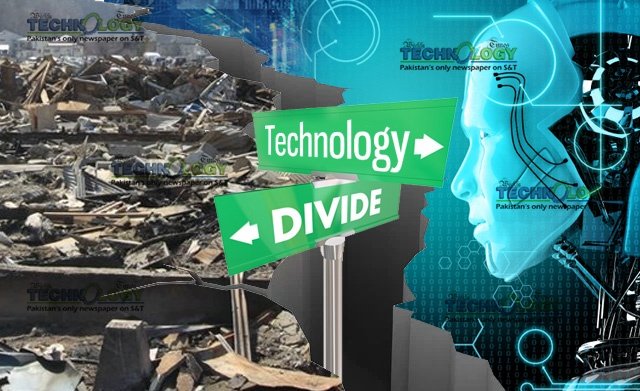The world is victim of many social ills reflected by terrorism, crimes, poverty and very poor health in less privileged communities. The haves-not part of world carries all the indicators of these social ills. Technology and innovation also divides both part of the world. It is called ‘technology divide’, it is giving leap-frog progress to those who have resources and leaving behind who do not have resources.

We appreciate the technology and innovation impact on develop society at the cost of rising difference with less develop world. The correlation of per-capita income and innovation index endorses this theory. The vicious circle of technology is backing by non- supporting actors in less develop world. The speed of new technologies is very fast and disables the runner-ups to catch the winners, which is causing technology divide.
The fundamental rules of technology rights are requiring to change to ensure its role for creating equality in the world
The technology birth
New inventions and innovation mostly occur in the developed societies. The phenomenon of innovation is back by quality education systems, sophisticated markets, high level of networking, supporting infrastructure, well equipped and functioning laboratories, compliance of standards, government proactive support and numerous financial aid programs present in the society. The less develop world very much lacks in these enablers of the society. Technology divide blocks the birth of frequent innovations. Contrarily, the presence of these enablers in advanced world produces the unmatchable speed of technology birth.
The technology consumption
The advanced world has higher per capita income and resultantly the larger disposable income. This leads to higher likelihood of spending on new technologies. The people buy high tech gadgets and daily life things. The high per capita income creates higher sophistication in the society which increases consumption of new innovations. Contrarily the poor part of the world has less sophisticated life and no disposable income to spend on new technologies. They go for cheap solutions. The ever growing debt on the people of less developed world also discourages use of advanced technologies. The governments pay big pie of revenue for debt services and little is left for development projects in the country.
The technology exploitation
The conversion of new ideas into innovative products and services also requires strong supporting factors in the society. They all exist in the develop world prominently. They include very strong IP protection, good governance, availability of venture capital, capacity building and mentoring of startups, and high tech universities to help in technology exploitation. Most importantly, the people are risk takers and the failure is rewarded and appreciated. The less develop world misses all these enablers which make the technology exploitation very difficult and increasing technology divide.
The piracy and corruption
The less developed world lack resources and face the serious issue of corruption and piracy. The governments of less developed world are known for corruption which trickles down to the society. The people find out their way into technology through piracy and imitation. This reduces the quality of products and also weakens the growth in innovations. The developed world loses the big market due to IP protection, high prices of technology and licensing fee. The imitation does not bring good prices for anyone in production process from owner to labors and poverty remains intact in the society. Exceptionally, the china and few countries did break the vicious circle by inviting production of innovative products and exploited their cheap labor. The rest less developed countries are large in numbers and could not replicate this success example.
Special technology rights
The vicious circle of technology dominance by advanc world needs to have a break. The very less develop world needs to be mark as “technology prefer countries”. They need to offer technology through license but at no-cost. There should be a program of international donors to support technology capitalization and diffusion in these “technology prefer countries”. The program should also provide finance and build capacity of local investors to invest and market new technologies in their countries. Through this technology divide gulf will reduce.
Conclusion: why special technology divide
The piracy and imitation of innovative products keep the poor countries poor and make the original innovators to lose the big market. The speed of new technologies in the market is increasing the divide between original innovators and imitators. This leads to vicious circle of technology divide between haves and haves-not.
Alternatively, the less develop world needs support to get out of technology poverty and become original thinker and innovator. That require rise of the society to get accustom to high tech products and services.
The technology cost should be lower to minimum level or set free. The investors of “technology preferred countries” need financial and non-financial support to produce original products and sell at cheaper prices. This will increase technology level equality in the world and transfer the same impact of equality in other aspects of the society. It will increase innovative capacity of the society to turn from imitators to original thinkers and inventors.
This will reduce the divide between haves and haves-not and alleviate technology poverty.
The author is Chief Coordinator, IRP and General Secretory, South Asia Triple Helix Association. He can be reached at rahmat@irp.edu.pk